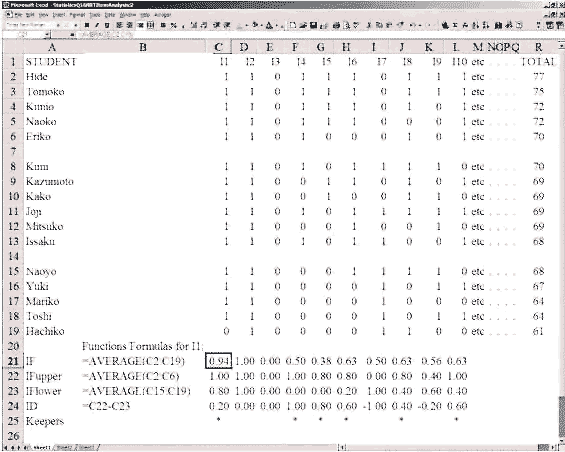Shiken:JALT Testing & Evaluation SIG Newsletter
Vol. 7 No. 2. Jun. 2003. (p. 18 - 20) [ISSN 1881-5537]
Norm-referenced item analysis
|
 James Dean Brown University of Hawai'i at Manoa |
[ p. 16 ]
 Screen 1: The NRT Item Analysis |
[ p. 18 ]
[ p. 19 ]
[ p. 20 ]